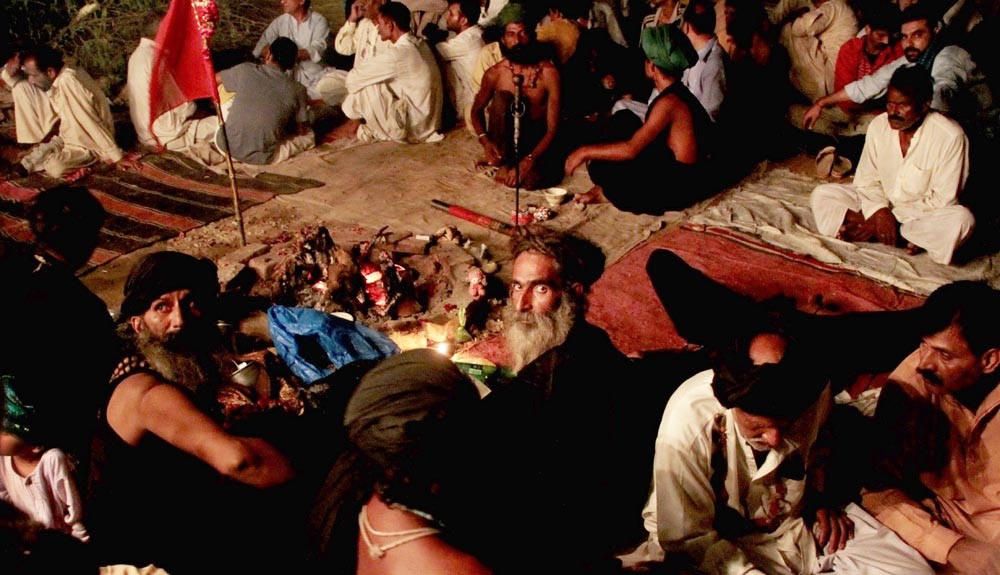
Celebrating the urs of Bulleh Shah and Waris Shah and the literature they left us

In the last few years, the urs of both Bulleh Shah and Waris Shah have been held on dates which traditionally were not assigned for the occasions. The urs of Waris Shah was supposed to be held on the ninth of sawan and the urs of Bulleh Shah on the ninth of bhadoan but for one reason or another the dates have been shifted and juggled around with.
The urs of Waris Shah is supposed be held now in September. A committee of the Punjab Government met a few weeks back and decided that not only the urs but also events planned for the entire coming year would be celebrated with great deal of aplomb. A number of books like Heer Waris Shah, edited by Muhammad Sharif Sabir that first appeared in 1985 and since has been out of circulation for quite some time now will be published on a large scale, research theses written by PhD scholars on Heer Waris Shah and its impact on the Punjabi society will be published, CDs of some Heer-Khwaans will be launched, a soft copy of Heer Waris Shah to be uploaded on Facebook and to approach the Punjab University to establish a Waris Shah Chair in the Department of Punjabi Language at Oriental College Lahore. It was also decided that a Bab-e-Waris Shah would be built on the road to Jandiala Sher Khan.
This also gives us an opportunity to remember Sharif Sabir and to appreciate his services to the cause of Punjabi language and literature. An unassuming man, he worked hard, unmindful of the reward and publicity in this increasingly media-conscious environment. The indefatigable scholar and editor of the Punjabi classics also edited Bulleh Shah which was published by the Jamal Husain Memorial Society in 1991. The work just as monumental as his work on Heer did not receive the same acclaim. Perhaps, it was not publicised enough.
The documented history of Heer is not more than 500 years old. Waris Shah wrote his Heer at Jandiala Sher Khan in 1766. The original manuscript has been lost to history as the oldest among the existing ones goes back only to 1821.
Its first printed version in the Persian script known as Hope Press Edition came out in 1865 although according to Mohan Singh Diwana it was first published in 1851 by Chashma Noor Press, Amritsar. In the 1930s, Mohan Singh Diwana pointed to the necessity of an authentic text of Heer Waris Shah. He himself edited Heer by going back to the manuscripts rather than the printed edition. Barrister Abdul Aziz continued with the effort and his edition was printed in 1960 for which he said that he consulted 23 manuscripts. In the 1970s, Sharif Sabir went to work on Aziz’s edition with the advantage of having examined three more manuscripts -- one he found in Chunian, one in possession of Mian Anwar’s family and one was with the Punjab Public Library.
Since the Punjabi texts have been reworked due to the oral transmission through centuries one of the many efforts earlier was made under the supervision of Dr Nazir Ahmed and published by Packages Limited. The scholars who went through the text for the purpose of authentication were Ahmed Rahi, Ashfaq Ahmed, Afzal Sufi, Sufi Tabassum, Hafeez Jullundhri, Ustad Daman, Salim ur Rahman, Faiz Ahmed Faiz and Najm Hosain Syed. Of course, there was a great deal of difference in the opinion on the authenticity of the text and it was resolved by giving the views of all the scholars on the kaafis rather than considering just one as being more authentic. Bulleh Shah’s text was first published by Malik Heera in 1882 and later was collected by Prem Singh Qasuri in 1896, and is considered more important.
The present day generation of Punjabis finds it difficult to understand the texts since these were written centuries ago. The language has changed and so has the way it is pronounced. It would be far better if in the printing and publishing of text, a multimedia facility is used. The text which is printed should also be accompanied by the oral version of the reading of the text. Similarly, the recitation of Heer by various exponents should also accompany the text. It will help to identify the differences one finds between the oral rendition and the so-called ‘authentic’ written text.
In literature, it is feared that much corruption has taken place over the years. There has been an effort to verify and authenticate the text; and many scholars and poets have sifted the text to find the most authentic one according to whatever criteria that has been laid down. In literature, even Shakespeare has been tampered with -- his text edited and added to, and his poetry simplified. If nothing else, his spellings have been modernised and made more contemporary with great care to not alter, change or modify the total impact of his poetry.
One wonders whether Chaucer has also been subjected to these injections of contemporaneity. But where music, for example, is concerned does one have the same sanctified approach or attitude to the original composition? Perhaps not. Because music existed orally and we still carry the same attitude towards it that characterised the oral tradition. The written text has been seen as something finished while music is in the state of being formed. The effort now is to contemporise music, or at least the compositions; even the intonation is made contemporary to sound more palatable and the instrumentation too to be in synch with today’s sonic sensibility. Greater liberty is taken in reworking the composition or the mode and making it relevant than in treating an ancient text. The mantra of authentication here is not sacrificed in making it understandable to the common man living in contemporary times.